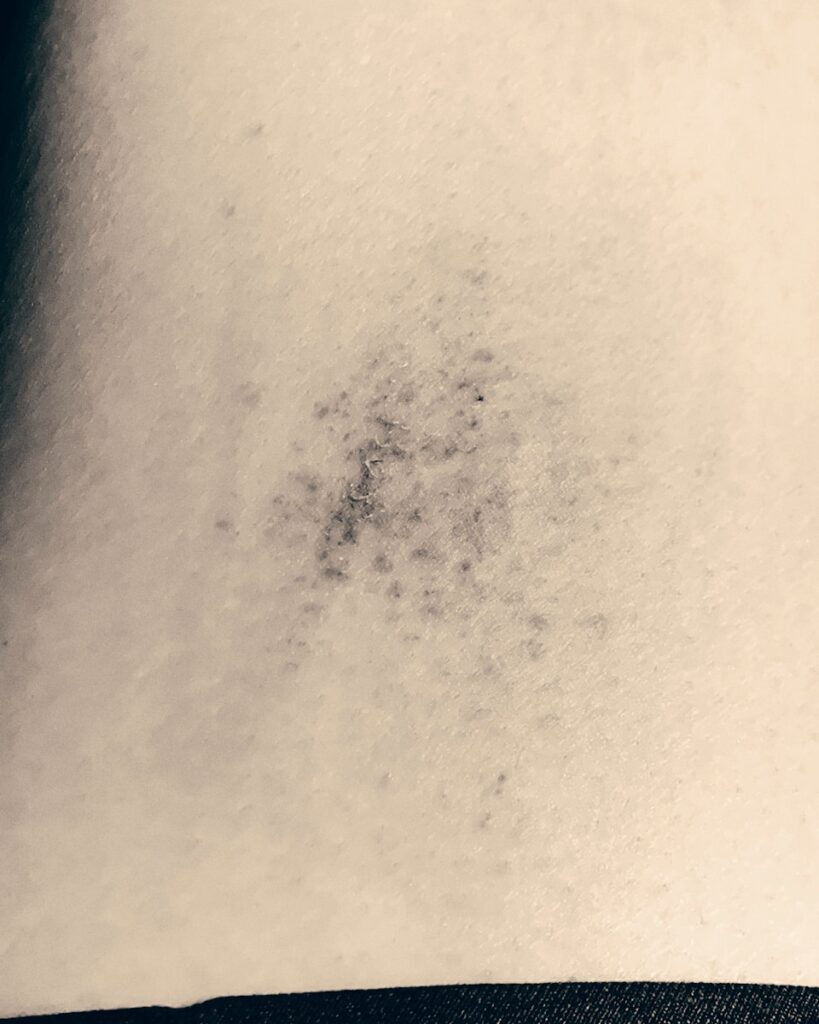
Anemia is more than just feeling a little tired; it’s a widespread condition where your blood lacks enough healthy red blood cells. These vital cells are responsible for carrying oxygen to every tissue in your body. Affecting over 1.6 billion people worldwide, anemia’s spectrum ranges from mild, subtle tiredness to serious, potentially life-threatening complications if it’s not recognized and addressed. Early recognition of its warning signs is absolutely crucial for safeguarding your health and preventing the condition from progressing.
In this in-depth guide, we are dedicated to illuminating the diverse ways anemia can manifest, offering clear and accessible insights into its many symptoms. We will thoroughly explore everything from the most common and often initially dismissed indicators, such as pervasive fatigue, to specific, critical signs. This includes those symptoms that uniquely start in your chest, directly impacting your cardiovascular system. Our primary goal is to empower you with comprehensive knowledge, enabling you to identify these crucial signals and understand precisely when it’s essential to consult a healthcare professional.
Understanding these symptoms represents the fundamental first step towards accurate diagnosis, appropriate management, and effective treatment. While some signs might appear subtle and easily attributed to other causes, others can be quite alarming, particularly when they involve the vital functions of your heart. Let’s embark on this journey together to uncover the essential warning signs of anemia that you should never ignore, starting with those primary indicators that most frequently lead individuals to seek medical advice.

1. **Extreme Tiredness and General Weakness**One of the most pervasive, and often the earliest, warning signs of anemia that you should never ignore is a profound, persistent fatigue or a general feeling of weakness. This isn’t just your everyday tiredness that resolves with a good night’s sleep; it’s an overwhelming weariness that seems to cling to you, making daily life an uphill battle. When anemia strikes, there’s a reduced level of red blood cells in your body, directly leading to a significant drop in oxygen circulation throughout your system.
Oxygen acts as the essential fuel that powers every cell in your body. Without a sufficient and steady supply, your body struggles immensely to generate the energy required for even basic activities. This reduction in oxygen availability means you can easily feel worn out, transforming routine tasks into exhausting endeavors. It’s a distinct and chronic sensation of being utterly drained, where your muscles, which demand oxygen for energy, experience a sharp decline in endurance when hemoglobin levels are low.
Initially, iron deficiency anemia, a common type, can be so mild that these symptoms might develop subtly and be mistakenly attributed to a busy lifestyle or stress. However, as the body’s iron stores dwindle and the anemia worsens, the symptoms intensify proportionally. What might begin as a slight lack of stamina can progress into an extreme tiredness and a pervasive weakness that profoundly impacts every facet of your life, making activity increasingly difficult. This persistent exhaustion is a critical signal that your body isn’t receiving the fundamental oxygen it desperately needs to operate efficiently.
It is paramount to understand that this debilitating fatigue is a direct consequence of your tissues and organs not getting the oxygen they require to function optimally. While numerous factors can contribute to feelings of tiredness, when extreme tiredness and general weakness become persistent, unexplained, and especially when accompanied by other potential anemia symptoms, it serves as a clear and urgent indication. Such signs necessitate immediate medical attention to thoroughly investigate the possibility of an underlying anemic condition, as early intervention can make a significant difference.
Read more about: Beyond the Stiffness: Serious Autoimmune Signals Including Those That Start in Your Skin You Should Never Ignore

2. **Shortness of Breath**Shortness of breath, often described as breathlessness, represents another significant warning sign of anemia that should never be dismissed. This symptom frequently arises even with minimal exertion, and in more severe cases, can manifest even while you are at rest. The physiological basis for this is clear: when your body lacks sufficient oxygen due to an inadequate count of healthy red blood cells, your respiratory system endeavors to compensate for this deficit. Your lungs are forced to work considerably harder in an attempt to capture and absorb more oxygen from the air.
However, if the essential red blood cells are not present in adequate numbers to effectively bind to and transport this oxygen throughout your bloodstream, the feeling of breathlessness can inevitably ensue. This particular symptom often intensifies the extreme tiredness you might already be experiencing, creating a challenging cycle of fatigue and respiratory distress. The sensation of not being able to catch your breath, or becoming unusually winded after only slight physical activity, is your body’s explicit signal of a critical and unaddressed oxygen deficit.
In cases of severe anemia, this compensatory effort by the lungs becomes significantly more pronounced. Individuals may find themselves experiencing shortness of breath even when engaging in no physical activity, such as simply sitting or lying down. This level of breathlessness indicates a critically low oxygen-carrying capacity in the blood. It’s important to acknowledge that your body is working overtime to try and supply more oxygen to its tissues.
It is absolutely essential to recognize that while shortness of breath is a hallmark of anemia, it can also be a symptom of various other serious medical conditions, including heart and lung diseases. Therefore, if you find yourself experiencing breathlessness that is uncharacteristic for you, or that progressively worsens over time, it is paramount to contact your healthcare professional immediately. Ignoring this specific warning sign carries the risk of overlooking a potentially serious underlying issue, whether it is anemia or another critical condition affecting your respiratory or cardiovascular health.
Read more about: Beyond Jaw Pain: Essential Heart Attack Warning Signs You Must Never Overlook, Especially for Women

3. **Chest Pain, Palpitations, and Rapid Heartbeat**Among the most concerning warning signs of anemia, particularly those that manifest in your chest, are a rapid heartbeat, noticeable palpitations, and actual chest pain. These symptoms are profoundly and directly connected to a significant lack of oxygen in your blood. When there are an insufficient number of healthy red blood cells to efficiently carry oxygen to all the body’s tissues, your heart is forced into overdrive, working much harder to compensate and ensure that vital organs, especially the brain and itself, receive the oxygen they desperately need.
The heart responds to this systemic oxygen deficit through a series of compensatory mechanisms. It begins to beat faster, accelerating its rhythm to circulate the limited available blood more quickly throughout the body. Simultaneously, it increases the force of its contractions and can even cause blood vessels to dilate in an effort to improve overall blood flow. This heightened workload and constant strain on the heart muscle can lead to easily noticeable palpitations—a distinct sensation of your heart pounding, fluttering, or racing within your chest. A consistently rapid heart rate is unequivocally not a good sign; over time, it can become hazardous for the heart itself and the intricate network of organs it supplies.
Furthermore, this immense, sustained extra stress on the heart muscle can directly precipitate chest pain, which is often clinically referred to as angina. This discomfort can be a frightening symptom, indicating that the heart muscle itself is not receiving enough oxygen to meet its increased demands. In particularly severe instances of anemia, if oxygen delivery to the heart muscles becomes critically low for a prolonged period, it can lead to grave complications. These include more intense and persistent angina, and in the most dire circumstances, even a myocardial infarction, commonly known as a heart attack, especially in individuals who may already have underlying or pre-existing heart conditions.
Understanding this intricate physiological connection is absolutely crucial: anemia essentially forces your heart to overexert itself relentlessly, which then leads to these pronounced cardiovascular manifestations. Therefore, if you experience any combination of chest pain, a rapid heartbeat, or persistent palpitations, it is not merely advisable but imperative to immediately consult with your doctor. These are not symptoms that should ever be taken lightly, as they serve as potent signals that your heart is under significant, potentially dangerous strain and requires urgent medical evaluation to prevent further complications.
Read more about: Beyond Fatigue: Crucial Thyroid Disorder Symptoms You Should Never Overlook, Including Early Signs That Begin in Your Hair and Skin

4. **Frequent Headaches and Dizziness/Lightheadedness**Another pivotal warning sign of anemia that you should never overlook directly involves your central nervous system, manifesting most commonly as frequent headaches and recurrent episodes of dizziness or lightheadedness. These particular symptoms arise because your brain, being one of the most metabolically active organs, demands a constant and entirely adequate supply of oxygen to function optimally and maintain cognitive integrity. When anemia diminishes the oxygen-carrying capacity of your blood, the brain is often one of the first and most sensitive organs to signal distress, indicating an insufficient oxygen supply.
Low oxygen delivery to the brain, medically termed cerebral hypoxia, can result in a spectrum of cognitive impairments. These can include reduced mental alertness, a noticeable difficulty with concentration, and a generalized feeling of being lightheaded or faint. This sensation of dizziness can be especially pronounced upon standing up rapidly, a phenomenon known as orthostatic hypotension. This particular symptom is a significant physiological indicator of how anemia can impact both blood volume and the overall oxygen supply throughout the body. The feeling can range in severity, from a mild, fleeting unsteadiness to a more pronounced and alarming sensation of being on the verge of fainting, known as presyncope or syncope in severe cases.
Headaches associated with anemia can vary considerably in their intensity, character, and frequency. They are often a direct consequence of the brain’s struggle to cope with inadequate oxygenation, as blood vessels may dilate or constrict in an attempt to normalize flow, leading to pain. While headaches and dizziness are indeed common ailments that can stem from a multitude of causes, when they become frequent, persistent, and especially when they occur alongside other potential anemia symptoms discussed in this guide, they unquestionably warrant a thorough investigation by a qualified healthcare professional. Ignoring these seemingly minor discomforts can have serious implications.
It is absolutely vital not to dismiss these specific signs as merely “stress” or “tiredness.” If you find yourself experiencing frequent headaches or recurrent dizziness, particularly if these symptoms worsen over time or are consistently accompanied by other indicators of anemia, you must make it a priority to visit your doctor. These are significant and tangible indicators that your body, and most critically your brain, is not receiving the optimal level of oxygen required for healthy, unimpeded function. An underlying condition such as anemia could very well be the root cause, and early diagnosis is key to effective management and recovery.
5. **Pale Skin or Jaundice/Yellowing of Eyes and Skin**Observing discernible changes in your skin tone, as well as the color of your eyes, can serve as an incredibly powerful and visually apparent warning sign of anemia that should never be ignored. Pale skin, medically termed pallor, stands as a classic and widely recognized indicator of anemia. This pallor is directly caused by a reduction in the amount of hemoglobin present in the blood vessels that lie close to the skin’s surface. Hemoglobin, the vital protein within red blood cells, is what imparts blood its characteristic rich red color; consequently, when its levels are low due to anemia, the skin can noticeably lose its healthy, vibrant, and rosy hue, appearing unusually light or grayish.
This distinctive paleness might manifest acutely, appearing suddenly and signaling a rapid onset issue, or it could develop much more gradually over time, becoming progressively more noticeable as an anemic condition transitions into a chronic state. The pallor is often most readily apparent in specific anatomical areas, including the face, the delicate inner lining of the eyelids, the nail beds, and the palms of the hands. If you detect an unusual, persistent, or increasing paleness in your skin that deviates significantly from your typical complexion, it is a compelling reason for concern and further investigation.
Beyond general paleness, another highly specific visual indicator, particularly indicative of certain types of anemia, is jaundice—a distinct yellowing of both the skin and the whites of the eyes (sclera). This yellowing could be a critical and urgent warning sign of hemolytic anemia. Hemolytic anemia is a specific and severe type of anemia characterized by the rapid and premature breakdown of red blood cells within the body. This accelerated destruction of red blood cells subsequently releases an excess of bilirubin, a natural yellow pigment, into the bloodstream. This surge in bilirubin is then deposited in tissues, leading to the unmistakable yellow discoloration of the skin and eyes.
Both generalized pallor and the more specific yellowing due to jaundice are profoundly important visual cues that your body is struggling with either its red blood cell count, their structural integrity, or their healthy functional capacity. These are critical signs that are often easily observed by both yourself and those in close proximity to you, making them invaluable indicators. It is absolutely essential to promptly discuss these visible manifestations with your healthcare provider for an accurate diagnosis and the initiation of appropriate medical management.

6. **Cold Hands and Feet**Feeling perpetually cold, particularly in your extremities, stands as yet another significant warning sign of anemia that sufferers frequently experience, often irrespective of the ambient temperature, even in normal or comfortably warm weather. This persistent and often uncomfortable coldness in the hands and feet is directly attributed to an underlying issue of poor blood circulation, which is a highly common physiological consequence of anemia. When your body is deprived of a sufficient quantity of healthy red blood cells—the primary transporters of oxygen—the efficiency with which blood can be circulated throughout the body is severely compromised.
In an effort to prioritize the oxygen supply to vital internal organs, the body intelligently, yet disadvantageously for the extremities, reduces the amount of blood flow directed towards less critical areas, such as the hands and feet. This physiological reallocation results in these peripheral extremities becoming noticeably and persistently cold. It’s not merely a fleeting sensation of chilliness; rather, it’s an enduring, often deeply uncomfortable coldness that strongly suggests a systemic circulatory issue stemming from inadequate oxygen delivery. This symptom is a direct reflection of your body’s overarching struggle to maintain an adequate and consistent oxygen supply across all its diverse tissues and organ systems.
The impact of anemia, therefore, extends far beyond more commonly discussed symptoms like fatigue or shortness of breath. It visibly and tangibly affects how your body regulates its core temperature and how effectively it circulates blood to its furthest and most distal points. While experiencing cold hands and feet can certainly arise from various other less severe causes, when this symptom is chronic, pervasive, and especially when it occurs in conjunction with several other warning signs of anemia already discussed, it becomes a crucial diagnostic clue that should not be overlooked.
Therefore, if you consistently find your hands and feet feeling unusually cold, seemingly regardless of external temperature conditions, and particularly if this sensation is accompanied by other indicators of anemia, it absolutely warrants an immediate and thorough conversation with your healthcare professional. Addressing the fundamental root cause of poor blood circulation, such as an underlying anemic condition, is essential not only for alleviating this persistent discomfort but, more importantly, for supporting overall bodily function and preventing potential long-term complications associated with chronic oxygen deprivation.
Read more about: Beyond the Swipe: 15 Brilliant Ways Top Influencers Turn Their Private Lives into Profit

7. **Cramping and Tingling in Limbs / Restless Legs Syndrome**Beyond the more commonly recognized symptoms like pervasive fatigue, anemia can also manifest through specific, often uncomfortable sensations in your limbs, such as cramping and tingling. These symptoms arise because your large leg muscles, which are constantly engaged in daily movement and activity, demand a consistent and adequate supply of oxygen and blood to function effectively. When anemia leads to oxygen deprivation, these muscles do not receive the essential fuel they need, directly resulting in feelings of weakness and severe cramps.
A notable manifestation of this oxygen deficit in the limbs is Restless Legs Syndrome (RLS), a neurological condition frequently associated with iron deficiency anemia. If you are anemic, you might experience uncomfortable, often irresistible urges to move your legs, accompanied by unpleasant sensations like itching, crawling, or pulling. These sensations typically occur or significantly worsen during periods of rest or inactivity, particularly in the evening or at night, making it difficult to fall asleep or stay asleep.
The discomfort from RLS can significantly disrupt healthy sleep patterns, directly contributing to the already pervasive fatigue often experienced by those with anemia. This unfortunately creates a challenging cycle where anemia causes RLS, which in turn exacerbates sleep deprivation and overall exhaustion. Recognizing these specific sensations as potential signs of anemia is vital, as addressing the underlying anemic condition can often lead to significant relief from these uncomfortable limb-related symptoms.
If you find yourself experiencing persistent cramping, tingling, or the characteristic uncomfortable urges of RLS, especially when these occur in conjunction with other potential anemia symptoms, it is important to consult your healthcare provider. These are not merely minor discomforts; they are explicit signals from your body indicating that something is amiss with your oxygen supply and overall metabolic function, warranting a thorough medical evaluation.

8. **Problems with Focusing / Cognitive Deficits**One often overlooked but significant warning sign of anemia that you should never ignore is the development of problems with focusing or experiencing other cognitive deficits. Your brain is a highly metabolically active organ, constantly demanding a steady and entirely adequate supply of oxygen to maintain optimal function, mental alertness, and cognitive integrity. When anemia reduces the oxygen-carrying capacity of your blood, the brain is often among the first and most sensitive organs to exhibit distress.
Inadequate oxygen delivery to the brain, sometimes referred to as cerebral hypoxia, can manifest as a range of mental impairments. You might notice a reduced mental alertness, finding it harder to stay sharp and attentive throughout the day. Concentration can become a significant challenge, making it difficult to complete tasks that require sustained mental effort, or to follow conversations and retain new information.
Research indicates a clear correlation between hemoglobin levels and cognitive performance. Both iron deficiency anemia and non-iron deficiency anemia can contribute to these cognitive deficits, which may affect individuals across all age groups. The diminishing of mental energy levels, alongside physical exhaustion, is a direct consequence of your body not receiving enough oxygen to power its most crucial operations, including intricate brain functions.
If you find yourself struggling with persistent difficulties in focusing, experiencing a noticeable decline in your usual cognitive sharpness, or having trouble concentrating, especially when these issues consistently accompany other potential anemia symptoms, it’s a critical sign. These intellectual changes are not just “brain fog” that can be ignored; they are tangible indicators that your brain is not receiving the optimal level of oxygen it requires, and prompt medical investigation is warranted to determine if anemia is the underlying cause.
Read more about: The Dragon’s Ascent: Unpacking China’s Modern Military and Expanding Global Reach by 2025

9. **Prolonged Menstrual Periods or Heavy Bleeding (in Women)**For women, specific changes in menstrual patterns can serve as a crucial and often overlooked warning sign of anemia. Experiencing prolonged menstrual periods or unusually heavy bleeding during menstruation is a significant indicator that should never be dismissed. This issue directly relates to blood loss, which is a primary and common cause of iron deficiency anemia, especially in menstruating individuals.
The uterine canal lining comprises uterine tissue that, during menstruation, can lead to substantial blood loss. If a woman is anemic or developing anemia, heavy or prolonged bleeding can further exacerbate the condition by depleting the body’s iron stores more rapidly than they can be replenished. This continuous cycle of blood loss and subsequent iron depletion can deepen the severity of anemia, intensifying other symptoms like fatigue and weakness.
Heavy periods, medically known as menorrhagia, are a leading risk factor for iron deficiency anemia in women. Each menstrual cycle contributes to a loss of iron-rich blood, and when this loss is excessive or extends over a longer duration, the body struggles to produce enough hemoglobin. This ongoing depletion can eventually lead to a significant reduction in healthy red blood cells, impacting the body’s essential oxygen-carrying capacity.
Therefore, if you consistently experience menstrual periods that are significantly heavier than usual, last for an extended duration, or are consistently accompanied by other potential signs of anemia, it is imperative to consult your healthcare professional. Do not consider heavy periods as simply “normal for you” without professional evaluation. Such symptoms are potent signals that your body might be losing crucial blood components and iron, necessitating prompt assessment and appropriate medical management to prevent or treat anemia.

10. **Changed Stool Color / Signs of Internal Bleeding**Changes in stool color, particularly if they indicate internal bleeding, are critical warning signs of anemia that demand immediate medical attention. While not always outwardly visible as fresh blood, internal bleeding can lead to anemia by causing a slow, chronic loss of blood and, consequently, iron from the body. This continuous loss, often undetected in its early stages, can significantly deplete iron stores and reduce the body’s capacity to produce healthy red blood cells.
One common manifestation of internal bleeding is the presence of black, tarry stools, medically known as melena. This dark, sticky appearance indicates that blood has been digested as it passed through the upper gastrointestinal tract, such as from a peptic ulcer, hiatal hernia, or colon polyp. Conversely, very pale stools can sometimes signal malabsorption issues, where the body struggles to absorb essential nutrients, including iron, which can also contribute to anemia.
Slow blood loss within the body can be a silent cause of iron deficiency anemia. This can stem from various sources, including conditions like colorectal cancer, as well as the regular use of certain over-the-counter pain relievers such as aspirin or ibuprofen, which can irritate the digestive lining and lead to subtle bleeding. Such bleeding might not be visible to the eye but can be detected through a stool occult blood test, a diagnostic tool specifically designed to identify hidden blood in stool samples.
If you notice persistent changes in your stool color, especially if they appear black and tarry, or if you suspect any form of internal bleeding, it is paramount to seek medical attention without delay. These are serious indicators that your body is not only losing blood but also potentially signaling an underlying gastrointestinal issue that requires urgent investigation. Early diagnosis of the cause of blood loss is essential for effective treatment and preventing severe anemia or other potential complications.
Read more about: Beyond ‘Toughing It Out’: 15 Critical Health Symptoms Men Must Never Ignore

11. **Brittle Nails and Irritation/Soreness of the Tongue**Anemia can also manifest in more subtle, yet equally important, physical signs that can be observed in areas such as your nails and tongue. Two key indicators that should prompt concern are brittle nails and an irritation or soreness of the tongue. These symptoms reflect the widespread impact of oxygen and nutrient deprivation on rapidly regenerating cells throughout your body, including those responsible for healthy nail and oral tissue growth.
Brittle nails, which may easily chip, break, or feel unusually weak, are a common symptom often associated with iron deficiency anemia. In some more advanced cases, nails might even develop a distinctive spoon-shaped appearance, a condition known as koilonychia. This change in nail health directly relates to the lack of adequate iron, a mineral crucial for the strength and integrity of nail tissue. Without sufficient iron, nail plates can become thin and fragile, losing their natural resilience.
Similarly, the tongue can provide visible clues to an underlying anemic condition. You might experience irritation, soreness, or even a noticeable change in its appearance. The tongue may appear unusually smooth, pale, or inflamed, sometimes referred to as atrophic glossitis. This discomfort and altered appearance are due to the insufficient oxygen and nutrient supply to the rapidly dividing cells on the tongue’s surface, which are essential for its normal function and taste perception.
These seemingly minor physical changes should not be overlooked, especially when they occur in conjunction with other existing symptoms of anemia. They serve as tangible reminders that your body is struggling to maintain cellular health due to a deficiency in vital blood components. If you consistently notice your nails becoming brittle or experience persistent soreness or unusual changes in your tongue, it is advisable to discuss these observations with your healthcare provider for a comprehensive evaluation.

12. **Unusual Cravings (Pica) and Appetite Changes**One of the more unusual, yet highly specific, warning signs of anemia, particularly severe iron deficiency, involves strange cravings and shifts in appetite. This phenomenon, known as pica, is characterized by an urge to eat non-nutritive substances. While it might seem bizarre, pica is a recognized symptom that warrants serious medical investigation, as it often points directly to an underlying iron deficiency anemia.
Individuals experiencing pica might develop a strong desire to consume substances that are not typically considered food. Common cravings include ice, dirt, clay, starch, or even odd smells like rubber, detergents, or cleaning agents. Chewing and craving ice, specifically, is a frequently reported form of pica in anemic patients, known as pagophagia. While the exact mechanism linking pica to iron deficiency is not fully understood, it is strongly correlated and often resolves with appropriate iron supplementation.
Beyond pica, anemia can also lead to more general appetite changes, particularly in infants and children who may develop a decreased desire to eat. This lack of appetite can further exacerbate nutritional deficiencies, creating a vicious cycle. In adults, while a significant loss of appetite might not be as pronounced as pica, any significant and unexplained alteration in eating habits or food preferences, especially when accompanied by other anemia symptoms, should be carefully noted.
These unusual cravings and appetite disturbances are not merely quirky habits; they are potent signals from your body indicating a severe nutritional imbalance, most commonly an iron deficiency. If you or a loved one develops persistent cravings for non-food items, or experiences unexplained and significant changes in appetite, it is crucial to consult a doctor promptly. Addressing these symptoms can lead to the accurate diagnosis and effective treatment of underlying anemia, improving both physical health and overall well-being.
**Diagnosis of Anemia**
Accurate diagnosis is the cornerstone of effectively managing anemia and ensuring appropriate treatment. When anemia is suspected based on symptoms, your doctor will typically order a series of tests to confirm the condition, identify its specific type, and determine the underlying cause. These diagnostic steps are crucial for tailoring the most effective treatment plan.
The primary diagnostic tool is a **Complete Blood Count (CBC)**, which is a common blood test that measures several components of your blood. Key indicators reviewed in a CBC for anemia include hemoglobin levels, hematocrit (the proportion of red blood cells in your blood), and the red blood cell count itself. Low levels in any of these measurements can signal anemia.
Further specialized tests may be conducted. A **Peripheral Smear** involves examining a blood sample under a microscope to study the shape, size, and appearance of your red blood cells, which can help pinpoint specific types of anemia. **Iron Studies**, including ferritin, serum iron, and Total Iron-Binding Capacity (TIBC), are essential for diagnosing iron deficiency anemia by assessing your body’s iron stores and how iron is transported. Additionally, **Vitamin Levels** for B12 and folate are checked, as deficiencies in these vitamins can lead to other forms of anemia.
In more severe or unexplained cases, a **Bone Marrow Test** might be performed to evaluate the production of blood cells within the bone marrow. If internal bleeding is suspected as a cause, a **Stool Occult Blood Test** can detect hidden blood in your stool. These comprehensive diagnostic approaches ensure that your healthcare provider gains a full understanding of your anemic condition, enabling precise and targeted interventions.
**Treatment of Anemia**
The treatment approach for anemia is highly individualized, depending entirely on the specific type and underlying cause of the condition. Addressing the root cause is paramount to effectively resolving anemia and alleviating its symptoms. A healthcare professional will determine the most suitable course of action after a thorough diagnosis.
For the most common type, **iron deficiency anemia**, treatment typically involves **iron supplements**. These are often taken orally, though intravenous iron may be necessary in some cases, along with dietary modifications to include more iron-rich foods. If a **vitamin deficiency** is the cause, such as insufficient B12 or folate, treatment will focus on **supplementation** with these specific vitamins. This may involve oral tablets or, in the case of B12 deficiency, injections.
When anemia results from **blood loss**, the immediate priority is to **treat the source of the bleeding**. This could involve medication for ulcers, surgical intervention for polyps or tumors, or management of heavy menstrual bleeding. In severe instances of blood loss or very low hemoglobin, **blood transfusions** may be required to rapidly restore red blood cell levels and oxygen-carrying capacity.
For more complex forms of anemia, such as **hemolytic anemia**, where red blood cells are prematurely destroyed, **immunosuppressive therapy** might be used to halt the immune system’s attack on red blood cells. In some specific cases, a **splenectomy** (surgical removal of the spleen) may be considered if the spleen is overly active in destroying red blood cells. In rare and severe conditions like **aplastic anemia**, which involves bone marrow failure, a **bone marrow transplant** might be the definitive treatment.
**Dietary & Lifestyle Recommendations for Prevention and Management**
Beyond medical treatments, adopting specific dietary and lifestyle practices plays a crucial role in both preventing anemia and managing the condition effectively. These strategies focus on ensuring your body receives and absorbs the essential nutrients needed to produce healthy red blood cells. Making informed choices about what you eat and how you live can significantly support your overall health and combat anemia.
A cornerstone of prevention and management is consuming a diet rich in **iron-rich foods**. This includes organ meats like liver, red meats such as beef, pork, and lamb, and poultry. Seafood is another excellent source. For plant-based options, incorporate beans, dark green leafy vegetables like spinach, dried fruits such as raisins and apricots, and fortified cereals, breads, and pastas. Legumes, including lima beans, peas, pinto beans, and black-eyed peas, are also valuable. If you follow a vegetarian or vegan diet, it’s particularly important to ensure a varied intake of these plant-based iron sources.
To significantly boost your body’s absorption of iron, it is highly recommended to **include vitamin C with iron-rich meals**. Vitamin C acts as a powerful enhancer for non-heme iron absorption. Good sources of vitamin C include broccoli, grapefruit, kiwi, leafy greens, melons, oranges and orange juice, peppers, strawberries, tangerines, and tomatoes. Simply pairing a glass of orange juice with an iron-fortified cereal, for example, can make a considerable difference. Conversely, it is advisable to **avoid tea and coffee with meals**, as these beverages contain compounds that can inhibit iron absorption.
**Regular health check-ups** are also vital, especially for individuals in high-risk groups, such as pregnant women, the elderly, and patients with chronic illnesses. These check-ups can help detect anemia early, even before symptoms become severe. For infants, prevention of iron deficiency anemia is crucial: babies should be fed breast milk or iron-fortified formula for the first year. Breastfed children need iron supplements starting at 4 months, and cow’s milk is not recommended for children younger than 1 year due to its poor iron content. After 6 months, introducing iron-fortified cereals and pureed meats can further boost iron intake. Children older than 1 year should limit milk intake to 24 fluid ounces (720 milliliters) daily to ensure they eat other iron-rich foods.
**Frequently Asked Questions on Anemia**
Understanding anemia often brings up many questions. Here are answers to some commonly asked queries about this widespread condition, providing clarity and practical insights.
**1. Can anemia go away on its own?**
Mild anemia that results from a temporary illness or a short-term dietary lapse might resolve spontaneously. However, the majority of anemia cases, especially those linked to chronic deficiencies or underlying medical conditions, require specific treatment to correct the issue and prevent complications. It’s crucial not to self-diagnose or self-treat, but to seek professional medical advice.
**2. Is anemia dangerous?**
Yes, if left untreated, anemia can pose serious health risks. Untreated anemia can lead to a range of complications, including organ damage due to chronic oxygen deprivation, heart issues such as an enlarged heart or even heart failure as the heart struggles to compensate, and in severe instances, it can be life-threatening. Early diagnosis and appropriate management are essential to mitigate these dangers.
**3. Can diet alone cure anemia?**
If anemia is primarily caused by a nutritional deficiency, particularly iron or certain vitamins, then a well-planned diet rich in the necessary nutrients, often combined with supplements as prescribed by a doctor, can effectively correct the anemia. However, medical evaluation is always necessary to confirm the diagnosis, rule out other causes, and guide the most effective dietary and supplementation strategy.
**4. How long does it take to recover from anemia?**
The recovery timeline for anemia varies depending on its cause and severity. For many cases of nutritional deficiency anemia, recovery can typically take between 4 to 8 weeks with consistent and proper treatment, including supplements and dietary changes. However, chronic or more severe cases, or those linked to ongoing medical conditions, may require a longer period of treatment and monitoring to achieve full recovery.
**5. Can anemia be prevented?**
Yes, in many instances, anemia can be prevented or its risk significantly reduced. Key preventive measures include maintaining a balanced diet rich in iron and vitamin C to enhance iron absorption, effectively managing any underlying chronic diseases that could contribute to anemia, and undergoing regular medical screenings, particularly if you are in a high-risk group. These proactive steps can help maintain healthy red blood cell counts and overall well-being.
Recognizing the diverse array of anemia warning signs—from the subtle tingling in your limbs to the more alarming changes in your stool or unusual cravings—is a powerful step towards safeguarding your health. Anemia is a manageable condition, but its successful management hinges on early detection and a comprehensive understanding of its manifestations. By staying informed about these crucial indicators, discussing any concerns with your healthcare provider, and adhering to recommended diagnostic and treatment pathways, you empower yourself to navigate beyond the bruise and ensure your body receives the vital oxygen it needs to thrive. Your proactive approach is the best defense against the silent progression of this widespread condition.




